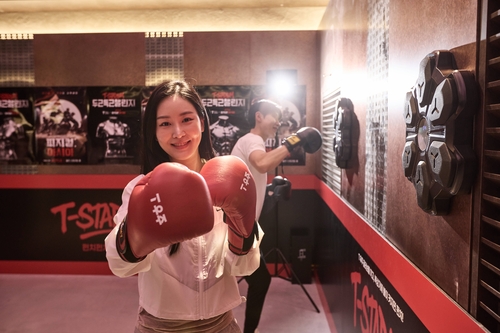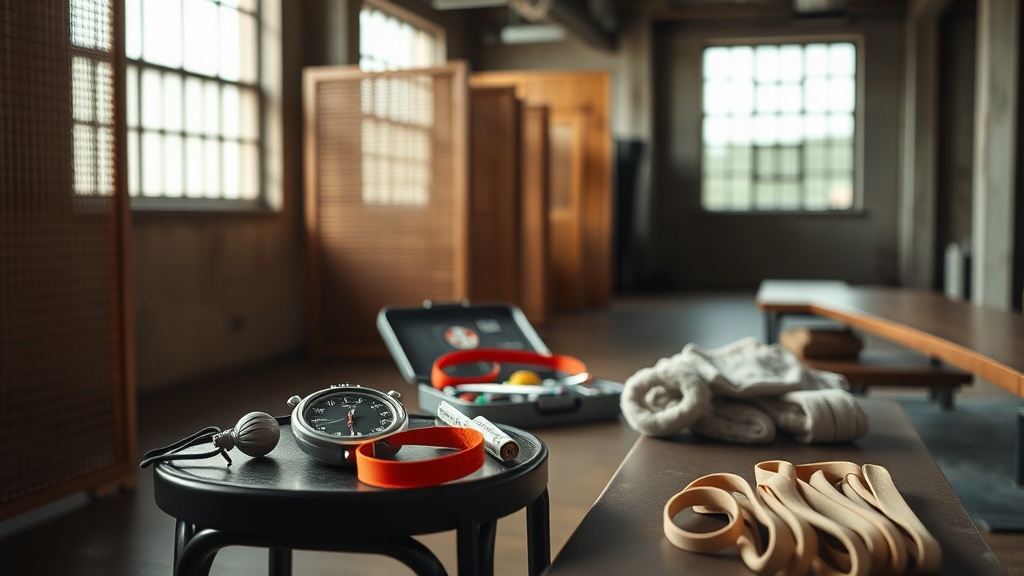Netflix's new competition series Physical: Asia is running a collaboration with SK Telecom at T-Factory in Seongsu-dong, Seoul.
Fans can try challenges from the show and feel its tension and immersion in person.
After its fall 2025 debut, the series climbed global streaming charts and drew international attention.
However, the program has also faced sharp criticism over how countries and contestants were chosen, and about safety and ethics.
Testing national pride: when a TV format meets a brand
Overview and origins
The idea is simple.
Netflix expanded its established head-to-head format into a pan-Asia contest.
Since the program premiered in autumn 2025, representatives from eight Asian countries have competed in extreme strength and endurance challenges that grabbed headlines.
SK Telecom brought that momentum offline with a pop-up called the "T-Stadium Heartbeat Challenge" at its T-Factory in Seongsu.
Fans can try filmed missions and connect the brand to the content through a hands-on experience.
Key point: This pairs a sports-entertainment format aimed at global viewers with an in-person activation.
Meanwhile, it shows how content reach and brand marketing can reinforce each other.
This exhibition tries to redefine fan experience beyond simple advertising.
On the one hand, live interaction can boost a digital show's immersion and grow fandom through sensory, on-site moments.
On the other hand, those same experiences require careful operations and trained staff to stay safe.
History and context
The lineage is clear.
Physical: Asia follows the format of Physical: 100 and evolves it into a contest between national teams.
The structure blends individual power and team strategy to keep viewers highly engaged.
Producers explicitly aimed to mobilize regional fan bases and drive global streaming traffic.
"A national rivalry storyline expands a show's scale."
This expansion fits a broader export of Korean content (K-content) around the world.
However, grouping diverse places under the label "Asia" raises boundary questions.
In particular, how the producers defined which countries belong in the contest has sparked debate about cultural identity.
On the ground: the T-Stadium Heartbeat Challenge
The experience is literal.
The Seongsu T-Factory pop-up recreates key obstacles from the show and lets fans step into those missions.
Guests attempt some challenges under safety gear and staff supervision, and social posts amplify the event organically.
SK Telecom has said publicly that it wants to combine brand experience with data-driven user engagement.
Summary: The live activation is a strategic asset that seeks synergy between brand and content.
However, safety and operational stability must come first.
On-site experiences convert fandom into action.
The data collected at the pop-up helps planners decide future products and investments.
Still, balancing commercial goals with participant safety remains a constant concern.

Arguments in favor
The benefits are tangible.
First, the format raises K-content's global profile by staging a multi-country contest that encourages national viewership and subscription incentives for streaming services (OTT, meaning over-the-top streaming platforms like Netflix).
Second, contestants' stories of struggle and triumph provide emotional payoff that keeps viewers invested.
"Audiences find comfort and inspiration in extreme challenges."
Third, the pop-up turns passive consumption into an event-driven experience.
That shift can grow the fan economy and lead to measurable returns in brand value and follow-up sales.
Thus, from a business viewpoint, experiential activations can yield a strong return on marketing investment.
Fan participation is a key driver of long-term brand loyalty.
Marketing-wise, these activations serve as relationship-building tools rather than one-off promotions.
With smart data analysis, companies can then tie participant behavior to merchandise and product plans.
Opposition and concerns
Problems remain.
First, viewers complained about how some countries were categorized; for example, the inclusion of Australia and Türkiye prompted debate over geographic and cultural fit.
Second, questions about contestant backgrounds clashed with the platform's stated diversity and inclusion goals.
Main worry: When commercial aims outweigh ethical standards and safety, trust in the content falls.
In one case, a participant's past remarks resurfaced and triggered criticism against the show's inclusion policies.
Third, the extreme physical demands create genuine risk: exhaustion, injury, and other health problems can occur if safety protocols are insufficient.
Safety must come before spectacle.
Producers bear the responsibility to protect contestants' health while pursuing commercial success.
If a show's profit motive eclipses care for participants, audience trust can erode quickly.
Comparing the two sides in depth
The crux is balance.
Supporters stress global reach, fandom growth, and economic impact.
Critics focus on identity concerns, ethical issues, and safety risks.
These perspectives are not only oppositional; they also raise complementary questions about how to design such projects responsibly.
"What should come first: expanding popularity or upholding standards and safety?"
Proponents point to past examples where live events and brand tie-ins strengthened loyalty and led to merchandise or ticket sales.
Opponents point to episodes in media history where controversial guests damaged a brand's reputation.
Both sides underline the need for ethical review and risk management during planning.
Ultimately, success depends on design quality and accountable operations.
Producers must pair the format's appeal with social responsibility.
Likewise, corporate partners should weigh long-term reputation alongside short-term promotion.
Online reactions and public debate
Responses are layered.
Supporters highlight contestants' dedication and the show's entertainment value.
Detractors focus on selection controversies and safety issues.
Short clips and memes spread quickly on social media and amplify both praise and criticism.
Summary: Fans respond emotionally, while critics organize around ethics and safety.
Case studies show that a single viral moment—an interview, a scene, or a misstep—can shape public opinion almost overnight.
Therefore, even small operational errors can balloon, making crisis plans indispensable.
Online opinion is a second stage that can determine a show's lifespan.
Producers and partners must monitor reactions in real time and speak transparently to rebuild trust.
In particular, safety concerns demand immediate and detailed responses.

Social and cultural meaning
The implications are complex.
The format can stir national pride and competitive spirit.
Positively, it can create opportunities for intercultural exchange across Asian societies.
However, debates about who belongs in the category called "Asia" can touch political and cultural sensitivities.
"Cultural exchange asks for respect even within competition."
Television today plays a role in shaping national images.
Thus, production and corporate partners must practice cultural sensitivity and inclusivity.
Commercial motives should be weighed against social impact.
Conclusion and recommendations
The conclusion is straightforward.
The Netflix show and SK Telecom's pop-up offer a new template for expanding content and deepening fan engagement.
However, clear gaps remain in country selection, vetting contestants, and enforcing safety protocols.
Success depends on balancing popularity with responsibility.
Producers should strengthen ethical review and safety procedures.
Corporate partners must design collaborations that protect long-term brand trust, not only short-term buzz.
In short, this collaboration illustrates K-content's global potential but also raises cultural, ethical, and safety questions.
Those debates can help the industry mature and produce safer, more responsible formats.
What do you think of this collaboration and the pop-up experience?